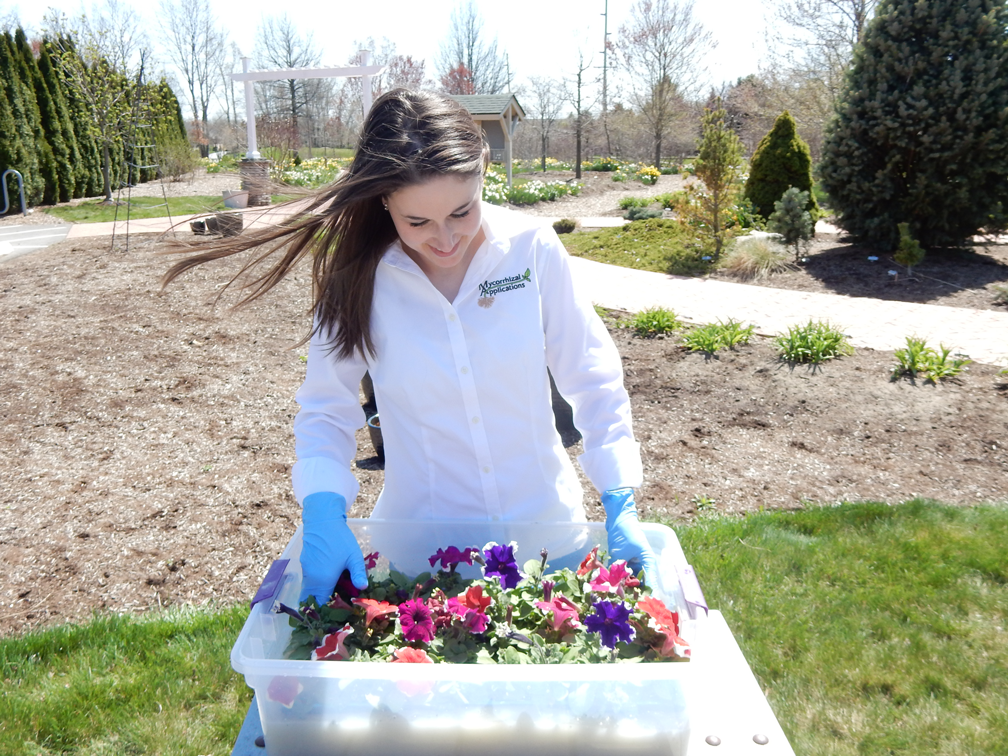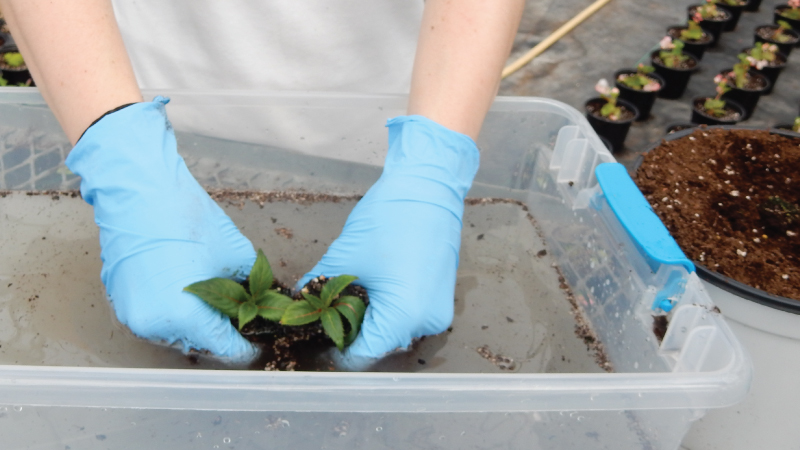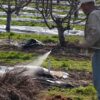Mycorrhizae are beneficial soil fungi that form a relationship with plant roots. The mycorrhizal hyphae, or fungal roots, grow much faster and longer than plant roots can grow. This dramatically expands the absorptive area of the root systems. This expansion of the surface area of the plant roots allows for increased access to nutrients, water, and oxygen for the plant. This results in many benefits to the plant, including increased vigor, drought resistance, fruiting/flowering, and transplant success.
Mycorrhizal Applications offers the MycoApply® professional product line that can be applied in a variety of different methods. We offer granules and powder that can be incorporated into growing media or mixed with water to apply as a drench or plug dip. This enables a grower to choose the application method that best fits into their growing practices. While plants can be treated at any time during their life cycle, we recommend that mycorrhizae are applied as soon as possible. Applying at seeding, propagation, or transplanting gets your plants off to their best start and maximizes the potential for the benefits offered by the mycorrhizae. This timing is also the most cost effective since a lower volume of soil must be treated.
The mycorrhizae go to work immediately after application to a growing plant root, but it can take 8-12 weeks for benefits to be visible. Differences will be visible sooner in more stressful growing conditions, as this is when the mycorrhizae can bring the most benefits to the plants. If plugs or liners have been treated, the mycorrhizal enhancements in plant performance will be more noticeable when they are transplanted into a larger container with more soil to expand into.
When using mycorrhizae in a production protocol, a few things must be considered:
- Fungicides: An extensive list of fungicides may be used with mycorrhizae without negative impact. The longer you wait to apply a fungicide after mycorrhizal inoculation, the better it will be for the mycorrhizal establishment and development. Consult our resource entitled “Horticulture & Turf Fungicide Effects on Mycorrhizal Fungi” for a full listing of fungicides that are safe to use. If a fungicide’s effect on mycorrhizae is unknown, we recommend applying after establishment of the relationship between the plant and mycorrhizae, typically 2-3 weeks. You can also apply the fungicide before the application of mycorrhizae and wait a week before adding the mycorrhizae.
- Fertilizer: High levels of water-soluble nitrogen and phosphorus can sometimes suppress mycorrhizal establishment in the plant’s root system, because it reduces the mutual needs of the host and the fungus. Plants that experience stress during production often develop a stronger relationship with their associated mycorrhizae. Controlled release and organic forms of fertilizers release their nutrients very slowly and do not increase the water-soluble nutrients in the substrate excessively, and are therefore recommended during mycorrhizal inoculation and establishment. For best results, we recommend keeping N levels at 200 ppm or lower and P2O5 levels at 100 ppm or lower while establishing mycorrhizae.
Mycorrhizae work well with other biological products, such as bacteria and Trichoderma. They are not impacted by pesticides, herbicides, or nematocides. Mycorrhizae can be mixed with and applied at the same time as RootShield without negative impact to either product’s efficacy.

It costs a professional grower as little as about 10 cents to treat an entire propagation tray. This one-time treatment will result in a lasting relationship between mycorrhizae and plant, giving the benefits of increased fertilizer efficiency, water efficiency, vigor, drought resistance, fruiting/flowering, and transplant success throughout each plant’s life cycle. The mycorrhizal treatment added at propagation or early in the transplant process stays with the plant throughout growth, transplanting, sale, and planting.
Please contact us at inquiries@mycorrhizae.com to discuss how mycorrhizae can impact your operation.







